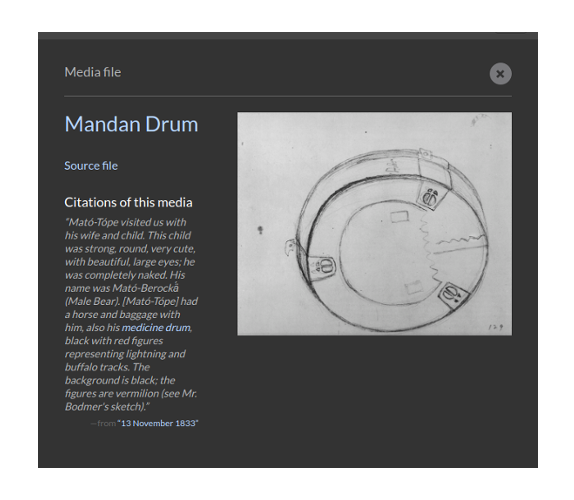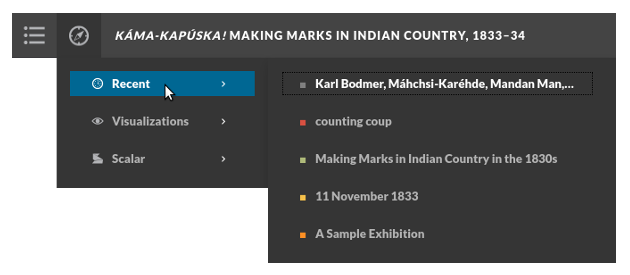The browser will either open the file, download it, or display a dialog.
with Allan McLeod
Introduction
Over the winter of 1833–34, the Numak'aki (Mandan) war chief Mató-Tópe (ca. 1784–1837) visited the makeshift painting studio kept by Swiss painter Karl Bodmer (1809–93) at Fort Clark, a trading post in what is now North Dakota, a total of fifty-five times. These visits illustrate the multiple activities of Bodmer’s studio over these snowbound months: hosting sitters, commissioning Native artists, and serving as a gallery where Native visitors viewed finished works and a workshop where local warriors completed their own projects. This project argues that Bodmer’s shared studio space and its doings are an extension of the Middle Ground, or the cultural arena co-created by Native and non-Native peoples on the French frontier, as defined by historian Richard White. The Numak'aki name that local warriors bestowed upon Bodmer (Kapúska, or “Forcefully Makes Marks”) demonstrates this co-creation by describing the artist’s practices through a Numak'aki lens, rather than a Western one—a testimony to the co-operation of distinct cultural systems within the Fort Clark studio. Examining the portraits and exchanges of Mató-Tópe’s activities in the Fort Clark studio through a framework of co-creation expands interpretations beyond the iconographic, ethnographic, and ideological readings that dominate previous art historical accounts.
This argument and application are modeled in the project’s digital platform itself, which interweaves the project’s archives of text and image in both linear (Western) and rhizomatic (non-Western) structures simultaneously. The scholarly essay of Part 1 is supported by the textual descriptions of day-to-day life and exchanged objects as recorded by Prince Maximilian zu Wied-Neuwied (Part 2), a sample exhibition of what Mató-Tópe and others may have viewed when they visited the Fort Clark studio (Part 3), and a presentation of Numak'aki themes and persons (Part 4). The latter re-orders the evidence of Part 2 through Native concepts, practices, and historical figures.
Note: The following links open in a new tab or window. The pages then have their own navigation independent of the issue.
Contents
■Scholarly Article
■Wied’s Journal Pages
■A Sample Exhibition
■Numak'aki Persons and Themes
■Project Narrative
■Sources






